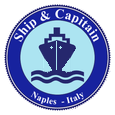INFORMAZIONI
STORICHE
La
chiglia fu impostata il 6 Giugno 1924 sullo scalo di Dalmuir. Il 23
Aprile 1925 fu varato, il 7 Novembre 1925 iniziarono le prove in mare
ed il 20 Novembre 1925 partì per il viaggio inaugurale sulla
linea Genova - New York.
Il 2 Gennaio 1932 passò alla Società Italia - Flotte Riunite,
nella quale confluirono tutte le navi del Lloyd Sabaudo.
Nel Settembre 1932 fu immesso sulla linea tra Genova ed il Sud America.
Prima dell'inizio dell'impiego sulla nuova line furono effettuati nuovi
allestimenti delle aree alberghiere, e la portata dei passeggeri passò
a 1.472, di cui 287 ospitati in Prima classe, 154 in classe Speciale
e 327 in classe Turistica, infine 704 in Terza classe.
Il 24 Febbraio 1935 effettuò il primo viaggio da Massaua, come
trasporto truppe, in preparazione dell’invasione dell’Abissinia.
il 2 Gennaio 1937 passo al Lloyd Triestino e subì lavori di trasformazione
che ne ridussero la stazza lorda a 23.255 tsl , e lo scafo fu riverniciato
di colore bianco.
Anche la a capacità d’imbarco fu nuovamente ridotta a 1.071
passeggeri, di cui 287 ospitati in Prima classe, 130 in classe Speciale
e 216 in classe Turistica, infine 438 in Terza classe.
Il 16 Aprile 1937 iniziò il primo viaggio da Genova per i porti
dell’Estremo Oriente.
Il 21 Gennaio 1940 salvò 316 naufraghi della motonave ORAZIO,
in fiamme al largo di Marsiglia, ed il 23 Febbraio 1940: sostituì
la nave ORAZIO sulla linea Genova - Valparaiso.
Con l'entrata in guerra dell'Italia, il 10 Giugno 1940 viene bloccato
e posto in disarmo a Balboa (Canale di Panama).
Il 21 Marzo 1941 fu sequestrato dagli americani e traformata in nave
da trasporto truppe USS
HERMITAGE.
1 Agosto 1947 venne restituito all'Italia ed il 18 Agosto 1947 durante
la navigazione per l'ITALIA avvenne il passaggio alla bandiera italiana
e fu rinominato CONTE BIANCAMANO.
Il 1 Aprile 1948 fu portato in cantiere a Monfalcone e sottoposto ad
un totale lavoro di restyling . Lo scafo fu allungato e modificata la
prua l lunghezza passò a 202,30 mt, furono sostituiti i vecchi
fumaioli con due nuovi e di taglio ellittico, la stazza lorda si ridusse
nuovamente a 23.562 tsl, mentre aumentò la capacità d’imbarco
passeggeri a 1.563 di cui 215 di Prima classe, 455 di classe Cabina
e 893 di classe Turistica.
Il 10 Novembre 1949 iniziò i viaggi tra Genova e Buoenos Aires
in seguito fu utilizzato a periodi alterni sia sulla rotta del Nord
America che su quella del Centro America.
Il 16 Agosto 1960 arrivò a La Spezia per esser demolito: parte
delle sovrastrutture vengono salvate e riassemblate al Museo della Scienza
e della Tecnica di Milano, altre parti, tra cui un'ancora, sono in un
ritrovo di Milano Idroscalo.
INFORMAZIONI STORICHE DAL SITO GRANDI TRANSLATLANTICI
HISTORICAL
INFO
The
keel was laid June 6, 1924 at the airport of Dalmuir . On April 23,
1925 it was launched , November 7, 1925 and began sea trials Nov. 20,
1925 he left for the maiden voyage on the Genoa - New York.
On 2 January 1932 it passed to the Italian Society - Gather Flotte ,
which merged all the ships of the Lloyd Savoy.
In September 1932 he was placed on the line between Genoa and South
America. Before the start of employment on the new line were carried
out new productions of the hotel areas , and the flow of passengers
passed to 1,472 , of which 287 are accommodated in First Class, 154
Class Special and 327 in Tourist class finally 704 Third class .
On February 24, 1935 made ??the first trip from Massawa , such as troop
transport , in preparation for the invasion of Abyssinia .
January 2, 1937 up to Lloyd and underwent conversion work which reduced
the gross tonnage 23,255 GRT , and the hull was repainted white.
Also the ability to boarding was again reduced to 1,071 passengers,
of which 287 are accommodated in First Class , 130 Class Special Class
and 216 in Coach, finally 438 Third class .
The April 16, 1937 began the first voyage from Genoa to ports in the
Far East.
The 21 January 1940 rescued 316 survivors of the ship ORAZIO , fire
off Marseilles , and February 23, 1940 : replaced the ship ORAZIO on
the Genoa - Valparaiso.
With the entry into the war, June 10, 1940 is blocked and layed up in
Balboa ( Panama Canal ) .
On March 21, 1941, he was seized by the Americans and converted into
troop transport ship USS HERMITAGE .
August 1, 1947 and was returned to Italy August 18, 1947 while sailing
for Italy was the transition to the Italian flag and was renamed CONTE
BIANCAMANO .
On April 1, 1948, he was brought to the site in Monfalcone and subjected
to a total restyling . The hull was lengthened and modified the bow
the length passed to 202.30 meters , the old chimneys were replaced
with two new and elliptical cut , the gross tonnage was reduced again
to 23,562 GRT , and increased the capacity to 1,563 passengers boarding
of which 215 First class , 455 cabin class and 893 tourist class .
On 10 November 1949 he began traveling between Genoa and Buoenos Aires
was later used to alternate periods is on the route of North America
and on that of Central America.
On 16 August 1960 he arrived in La Spezia to be demolished : part of
the superstructure are saved and reassembled at the Museum of Science
and Technology in Milan , other parts , including an anchor, are in
a meeting in Milan seaplane base .
HISTORICAL
INFORMATION FROM THE SITE BIG LINERS
Former
names
|
Former
flags |
|
Galleria
fotografica
|
|
Photo
gallery
|
|




